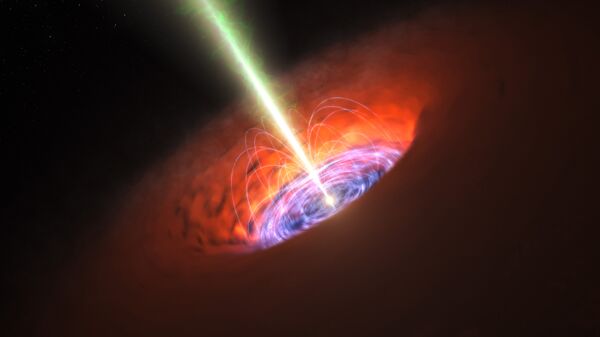A research team from the University of California at Riverside has discovered that winds produced by supermassive black holes at the centre of dwarf galaxies suppress the formation of stars there. Their findings have been published in The Astrophysical Journal.
The three astronomers identified 50 dwarf galaxies using observations made by Sloan Digital Sky Survey and noticed that more than half of them, 29, could have black holes at their centres. Six of them showed signs of winds stronger than anticipated by the team, who had planned observations with much higher resolution and sensitivity.
The astronomers suspected that the winds, which consist of high-velocity ionised gas, pushed out from black holes compress the gas ahead of them. This is thought to be the building material for new stars, but as it is expelled from a galaxy’s centre, star formation is reduced. This is what seems to be taking place in the six galaxies studied.
“Theoretical models for the formation and evolution of galaxies have not included the impact of black holes in dwarf galaxies. We are seeing evidence, however, of a suppression of star formation in these galaxies. Our findings show that galaxy formation models must include black holes as important, if not dominant, regulators of star formation in dwarf galaxies”, one of the researchers, Assistant Professor of Physics and Astronomy Laura V. Sales explained.
As her team leader, Professor of Physics and Astronomy Gabriela Canalizo, points out, although the researchers have suspected that a black hole at the centre of a galaxy impacts its growth, their findings indicate that this effect could actually be even more dramatic for dwarf galaxies.
These tiny galaxies, which contain between 100 million and a few billion stars in contrast to giants like our Milky Way, are considered to be space fossils that allow us to have a sneak peek into the environment of the early universe, first author of the research paper Christina M. Manzano-King says.
“Larger galaxies often form when dwarf galaxies merge together. Dwarf galaxies are, therefore, useful in understanding how galaxies evolve. Dwarf galaxies are small because after they formed, they somehow avoided merging with other galaxies”, she revealed.


